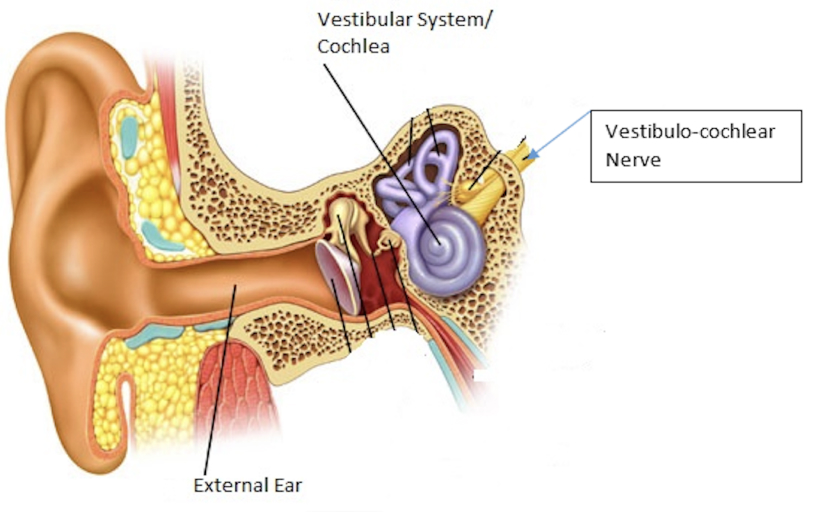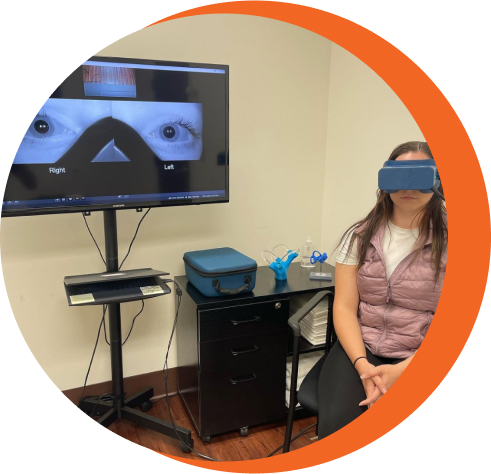People with vestibular disorders often experience problems with vertigo (sense of false motion or spinning), dizziness, visual disturbance, and/or imbalance. Additionally, nausea, vomiting, reduced ability to focus or concentrate, and fatigue may occur secondary to a vestibular disorder. Symptoms caused by a vestibular disorder can interfere with quality of life and contribute to feelings of anxiety and depression. The purpose of Vestibular Rehabilitation is to reduce symptoms and improve quality of life.



BPPV is the most common cause of dizziness. It is an inner ear problem that accounts for 20-30% of all adult cases of dizziness and as many as 50% of cases in individuals over 65 years of age. The most common symptoms include brief episodes of vertigo (sense of spinning or false movement), dizziness, or unsteadiness, usually lasting less than one minute. You may also experience nausea, vomiting, sweating, and abnormal eye movements. These symptoms are brought on by positional changes of the head with respect to gravity. The most common symptom triggers include lying down/sitting up, rolling over, looking up, and bending over.
BPPV occurs when small crystals of calcium carbonate (otoconia) in the inner ear become displaced and fall into another part of the inner ear called the semicircular canals. The semicircular canals are fluid filled structures that sense rotational head movements. When otoconia crystals are free floating in the fluid of the semicircular canals, the fluid will move excessively when the head is moved relative to gravity. This abnormal movement of the fluid causes the sense of vertigo.
Your physical therapist will evaluate you for BPPV using evidence based methods. If you have BPPV, your symptoms will be reproduced by this test. Your physical therapist may use video infrared goggles in order to see your eyes better during this test.
If you are found to have BPPV, treatment involves taking your head and body through a specific series of positions in order to move the crystals back out of the inner ear canals. This is called a Canalith Repositioning Maneuver. The most common Canalith Repositioning Maneuver is the Epley Maneuver. Canalith repositioning may be repeated 1-3 times in a session to maximize the success of the treatment.
Eighty percent of people get relief from one treatment session for typical BPPV (Gordon and Gadoth 2004). However, additional sessions may be required.
BPPV can recur. If your BPPV does return, you should contact your physical therapist. With a recurrence the crystals may be in a different canal, so your treatment may be different than before. You should never try to use internet videos to attempt to treat yourself. If appropriate, your physical therapist may teach you exercises to perform at home for treatment and prevention. However, this is not appropriate in all cases. Medication (Meclizine, Antivert, Dramamine) has not been proven effective but rather can cause more harm than benefit.
Remember, BPPV is treatable and the repositioning maneuvers can greatly reduce your vertigo and other symptoms associated with BPPV.
Risk factors for BPPV:
Once BPPV is resolved it is not unusual to have some residual motion sensitivity and/or balance impairments which can be addressed by Physical Therapy.
The inner ear contains a vestibular organ supplied by a vestibular nerve. Together they make up the peripheral vestibular system. This system sends information about balance, head position, and head movement to the brain. The right and left peripheral vestibular systems normally work equally and opposite of each other. Unilateral Vestibular Hypofunction occurs when one side is not working normally, due to damage or irritation of the vestibular nerve. The imbalance in function causes the brain to receive conflicting information. This conflicting information causes you to be symptomatic.
Symptoms of Unilateral Vestibular Hypofunction include a gradual onset of dizziness or vertigo, nausea and vomiting. These symptoms usually peak within 24 hours, but severe symptoms may remain for 2-4 days. Other symptoms may include:
Any process that causes irritation or damage to the vestibular nerve or vestibular organ in the inner ear can lead to vestibular hypofunction. Causes may include:
Medical Providers may prescribe antibiotics or medications to help decrease the dizziness and nausea, and steroids to minimize hearing loss. Some individuals with Unilateral Vestibular Hypofunction caused by infection have complete resolution of symptoms when the infection clears. Others have residual symptoms.
Vestibular rehabilitation is a specific type of Physical or Occupational Therapy aimed at helping your body and brain to adapt and compensate for imbalance in vestibular function. Vestibular rehabilitation will usually involve a combination of eye exercises (gaze stabilization), motion exercises, balance exercises, and walking exercises to help with this process, thus decreasing your symptoms. Your exercise program will be reviewed and modified frequently to aid with the recovery process. Completion of your home exercise program is crucial for your successful recovery. These exercises should be challenging and will cause some symptoms. Mild symptoms are necessary to help your body and brain adapt and compensate. Severe symptoms, however, are not necessary. Symptoms that occur due to your home exercise program should decrease within approximately 30 minutes of completing your exercises.
Feeling dizzy can make it difficult to participate in daily activities.
Fortunately, physical therapy may reduce many of the uncomfortable sensations associated with vertigo,
dizziness, and balance disorders. Our certified doctors of physical therapy are ready to help you regain mobility and feel your best.
Fill out the form below and we will get back to you shortly on scheduling your appointment date!

CONTACT:
833-4 WE HEAL (833-493-4325)
Fax: 833-918-2233
[email protected]
WORKING HOURS:
Monday – Friday
8:00AM – 5:00PM